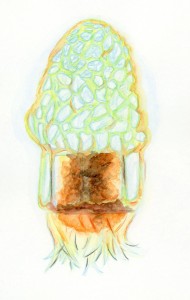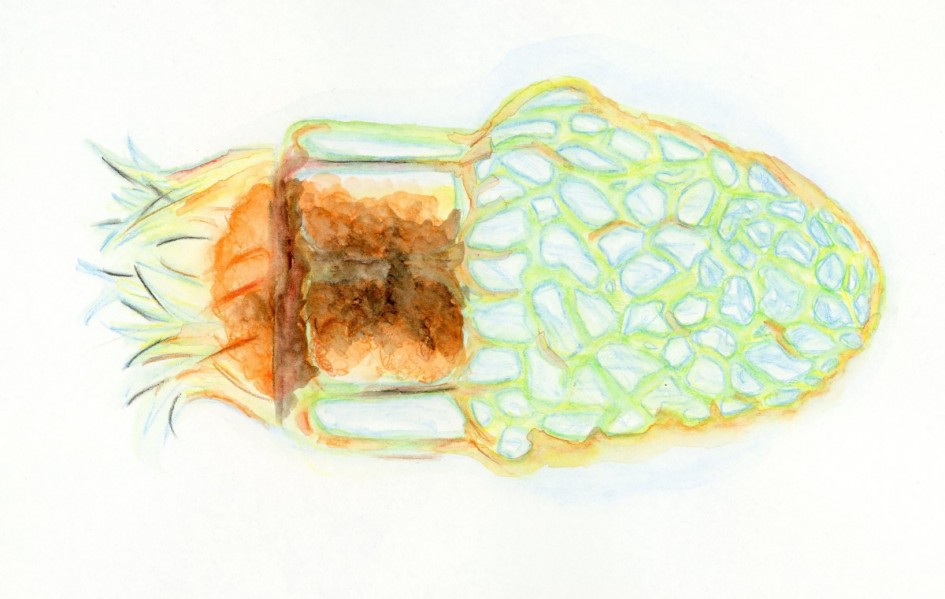Author: Kasey Tollefson

This species of Tintinnids, which I believe to be the Tintinnopsis campanula as compared to other species, and it has a shell formed from sand and minerals, illustration also depicts the transparency of the organism. Illustration done by K. Tollefson ’16
The Tintinnid ciliate is very unique in its diversity, ranging sizes from 20-200 µm, with an enormous assortment of lorica (shells), and the only plankton to possess these shells. Their shells can range from vase, bowl or tubular shapes and is always open at one end, which is the oral end and the other is closed or tapered. One common characteristic of these Tintinnids is that they bear cilia (small hair like organelles used for feeding and motility), during part of their life or the entirety of their life cycle, and another is nuclear dualism (macro- and micronuclei). The oral structure of the Tintinnid Ciliate contains tentaculoids, which is thought to be related to capturing their prey, such as phytoplankton and other small dissolved organic matter. When feeding, the cell that is attached to the inside of the lorica extends out and in-turn propels the organism through the water, mouth-end first and if interrupted it will withdraw the cell back into the lorica.
Class: Spirotrichea
Subclass: Choreotrichida
Order: Tintinnida
In some species the loricae is made up of mineral particles, species in the genera Tintinnopsis, and others, most of these organisms are found in coastal waters. “Lorica” refers to the protective clothing and armor worn by the roman soldiers credited to Ehrenberg in 1832. It is unknown why the Tintinnid Ciliate possess this armor but some theories say that it is useful for sinking quickly to escape predators (Capriulo et al. 1982) and possibly for maintaining their intended direction while swimming (Kofoid and Campbell 1939).

The purpose of this illustration is to show the transparency of the organism and the sizing, these creatures can range anywhere from 20-200 micrometers, although the image that is shown is 250 micrometers. Illustration done by K. Tollefson ’16
The significance of the Tintinnid Ciliate to the world is that it is a very important factor to our ecosystem! These organisms help form the bases of the food chain by feeding animals from as small as other zooplankton all the way up to whales! Another important detail about this creature is that it is also largely responsible for recycling organic matter, which is a very important factor in any food web.
The lesson to learn from these little guys is that every member in our society matters, no matter how small or how large, how poor or how rich, everyone has a duty, and that is to support your kin and to respect the world you live in, because truly, the small things count.
Bibliography:
Dolan, John R. The Biology and Ecology of Tintinnid Ciliates: Models for Marine Plankton. Chichester, West Sussex: Wiley-Blckwell, 2013. Print.Pg 3-8.
Castro, Peter, and Michael E. Huber. Marine Biology. New York: McGraw-Hill, 2010. Print. Pg 98.

